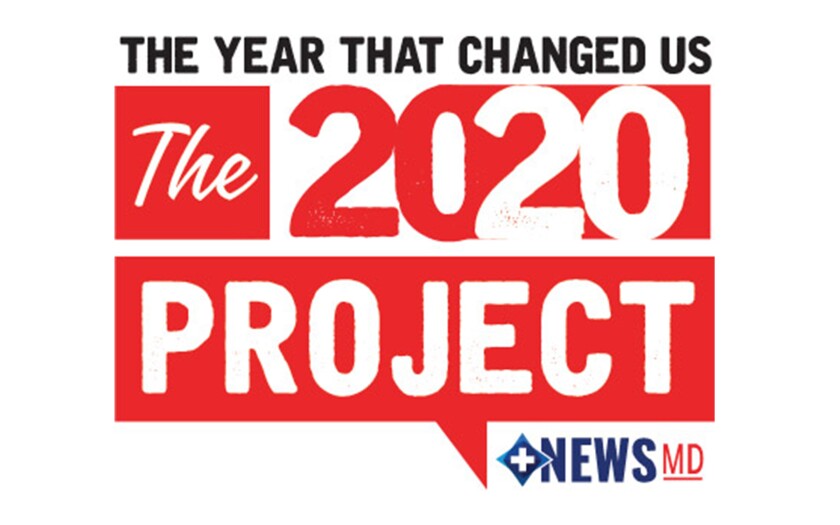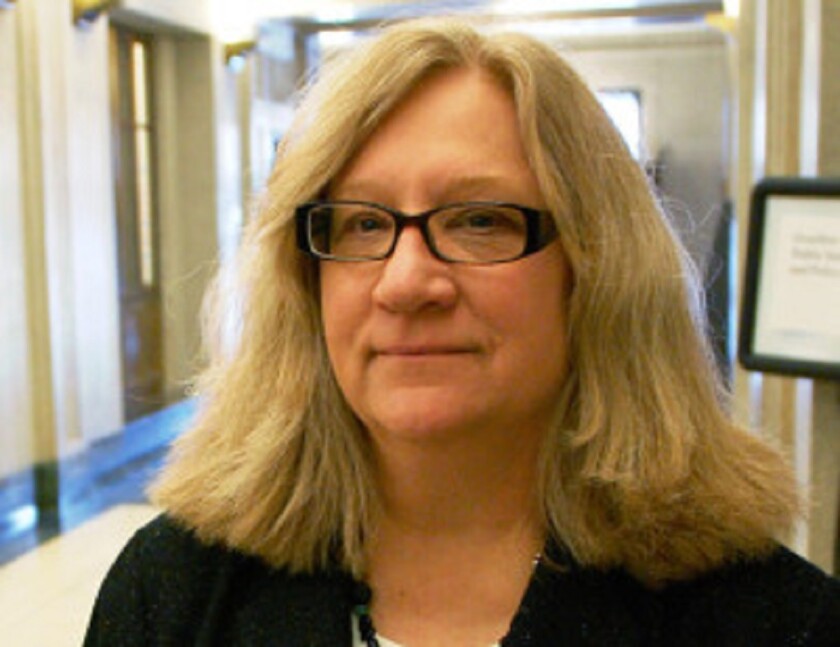ST. PAUL — It’s been more than 11 months since the first confirmed case of the novel COVID-19 illness was identified in the United States.
Within just a couple of months, life changed for most Americans.
ADVERTISEMENT
In Minnesota, for instance, Gov. Tim Walz ordered residents to stay at home to curb the spread of the virus. Face masks became common, as did working from home and quarantining. Americans stocked up on hand sanitizer and toilet paper. Family members did not see each other for months, if at all.
For weeks, restaurants were devoid of the usual bread-breaking and conversation. Houses of worship fell silent. Unfinished worksheets sat in children’s unoccupied desks. There was no gossip around the office water cooler.
Life was at a standstill.
The situation has evolved, but the entire country continues to walk on eggshells, as it has for months. Milestones such as weddings and graduations have been postponed and families have connected over video screens rather than hugs.
Meanwhile, coronavirus cases kept climbing, as did the brutal virus’s death toll. In mid-December, the nation reached a horrifying benchmark: 300,000 Americans reported dead due to COVID-19.
And as the virus itself wreaked its havoc, political tensions reached a fever pitch: The killing of George Floyd at the hands of Minneapolis police in May sparked worldwide calls for racial justice. The nation turned out in record numbers to vote in one of the most furiously contested presidential races in history. As the stakes got ever higher for a nation struggling to beat back a pandemic, political debate grew hotter than ever, sometimes violent.
So, . Americans in the Midwest and across the country are feeling isolated, burnt out and in mourning.
ADVERTISEMENT
The toll on mental health

Still in the throes of the pandemic, it will take time before mental and behavioral health professionals can measure the full impact the pandemic and mitigation strategies have had on the minds of Americans. But according to , 40% of adults surveyed reported they were struggling with mental health or substance abuse — “considerably elevated” levels compared to normal times, the report says.
Sue Abderholden, who serves as executive director of the National Alliance on Mental Illness-Minnesota, told Forum News Service that the mental health organization’s helpline calls are up 35% compared to normal call volumes.
At first, she said she thinks people were “hunkering down,” just trying to get through the first two months or so. But then she said it seemed to dawn on the public: “This isn’t a sprint. It’s a marathon.”
She said there are a variety of factors this year that could have exacerbated mental health needs: months-long feelings of uncertainty and fear, economic anxiety, limited child care options, loss of routine, a lack of physical space for those living in small or multigenerational homes, rising political tensions, extreme isolation, grief for lost loved ones as well as what she called “ambiguous loss” over canceled events and milestones — the list goes on.
For those who have long-standing mental health needs, widespread virus mitigation measures may make it harder to access care. The pandemic has been hard on providers, too, and many are strapped for resources. Many doctor’s appointments have been moved onto virtual platforms, and while telehealth can be a godsend for many — especially in rural areas — it doesn’t work for everyone.
ADVERTISEMENT
“Some (patients) need that face-to-face time rather than over the telephone or text messaging,” said Brenda Bergsrud, who chairs North Dakota’s Behavioral Health Planning Council.

In an October news release, Minnesota Lt. Gov. Peggy Flanagan said the mental health of children through the pandemic was of “utmost concern” to her. With most students distance-learning for at least part of the year, children and young adults have been particularly vulnerable because of their altered routines and lack of socialization. Additionally, while learning from home, students are away from educators who can normally watch out for signs of mental and emotional distress. And some students regularly receive care and counselling from professionals while in school.
Same storm, different boat
The pandemic and mental health needs have affected some populations differently than others. As Abderholden said, we are all weathering the same storm, but in different boats.
Since March, people of color have borne the brunt of much of the pandemic, seeing disproportionate rates in job loss, COVID infections and deaths from the virus. And since long before the pandemic, Abderholden said historic disparities in health care access and cultural differences in mental health discussions have all impacted people of color’s ability to get the care they need.
Women have also carried a heavier burden since March, The pandemic has also sparked what some have called with thousands of mothers leaving the workforce to take care of their children as schools went virtual and already limited child care options shriveled.
ADVERTISEMENT
According to the bureau, for the first time since 1948 — when they first began tracking the metric — female unemployment reached double digits in 2020.
MORE FROM THE 2020 PROJECT:
-
Health care after COVID-19: vaccine passports, social disruption and a forgetting of this era
-
Families in 2020: 'What we are able to give, has to be enough'
-
'Don’t let the pandemic steal your joy': In 2020, church communities dove deeper into faith
For lower-wage earners across the country, COVID-19’s economic fallout kicked them when they were down. , even before the pandemic, the stress of precarious family finances has been linked to negative mental health care outcomes and substance use. And a lack of financial resources, insurance coverage or community care options means it can be near impossible for low-income Americans to get help.
According to , lower-wage earners were more likely than middle- and upper-income earners to report that they or another member of their household had lost income since the pandemic struck. 46% of lower-wage workers surveyed said they had trouble paying bills since March, compared to 19% of middle-income and 5% of upper income earners.
And although the coronavirus does not see gender or sexual orientation, higher rates of anxiety, depression and suicidal ideation experienced by LGBTQ+ people has been documented for years.
The system was ‘never built’
Minnesota has made an effort to respond to the rising need. In October, Walz announced that $3 million in federal CARES Act dollars would be allocated to boosting mental health services for children and families through the pandemic.
“Too many families suffered from mental health crises without knowing where to turn even before COVID-19,” Walz said at the time.
ADVERTISEMENT
Abderholden said even before the pandemic, mental health services have been underfunded, subject to low Medicare and Medicare reimbursement rates and not enough investment. Providers and advocates have been trying to build resources for 40 years she said, but “without funding, it’s hard.”

“Our mental health system isn’t broken, she said. “It was never built.”
As hospitals fill with coronavirus patients needing acute medical care and health care workers are pushed to the brink, Abderholden said the current focus is on those on the frontline of the pandemic — and rightfully so. But once that battle is won, she said she hopes the powers-that-be will take a hard look at how mental health care can be expanded.
“You have a situation where more people than ever are needing help,” she said. “We don’t really have the capacity. We didn’t have the capacity to serve the people before. (...) Well, what are we going to do now?”
In the immediate future, Abderholden said she hopes to see governments make grant money available to help treat the current need.
ADVERTISEMENT
But even after the coronavirus vaccine is widely available and things begin to resemble normalcy again, Abderholden said she is concerned about the long-term impact this past year could have on Americans’ minds. The pain won’t go away overnight.
When people are in the midst of crisis — or in this case, a long-term state of crisis — Abderholden said people have a tendency to buckle down just to get through it. Then after the fact, they are exhausted and think, “How did I ever do that?”
“Because everyone has just tried to really push forward for a very long period of time, I think we’re just going to see a lot of people frankly just kind of fall apart when this is over,” she said.

A silver lining
Bergsrud said the first barrier for people to get the help they need is the stigma that surrounds mental health. It’s often the people in need who need to make the first move and reach out for help.
Thanks to a “Scandanavian upbringing,” she said that might be even harder for upper Midwesterners.
“It’s always been a stigma problem, and so people don’t want to say it out loud,” she said. “Therefore, they hold it inside until either there’s a breaking point or somebody actually reaches out (to them) and says, ‘Come on we’re going to help you.”
If there is a silver lining to the pandemic, Abderholden said she thinks there will be more awareness of and empathy toward mental health needs on the other side of the pandemic because “there are few people through all of this who have felt nothing.”
“I think most people have felt days when they were incredibly anxious about the future and about what was going on in their lives,” she said. “There were days when people were depressed. I think there were days when people drank too much.”
And she said she thinks people are talking about it more, lessening the stigma. Even on social media, she sees friends posting frankly about their needs and struggles right now.
If you need help
If you are experiencing thoughts of suicide, call the National Suicide Prevention Lifeline at 1-800-273-TALK (8255) for English and 1-888-628-9454 for Spanish.
If you are experiencing intimate partner or domestic violence, consider calling the National Domestic Violence Hotline at 1-800-799-7233, or text LOVEIS to 22522.
If you need help accessing mental health or substance use care or resources, consider calling the SAMHSA’s National Helpline at 1-800-662-HELP (4357).
If you are in an emergency, call 911.
This story is part of a 13-day series that looks at all the ways 2020 has changed us. From now until 2021, expect stories on workplace and education, sports, economics, politics and everything in between. Contact Sarah Mearhoff at smearhoff@forumcomm.com or 610-790-4992.








